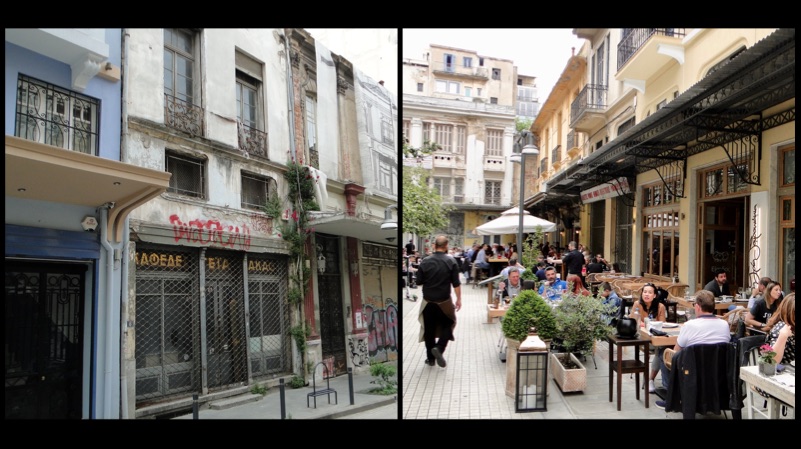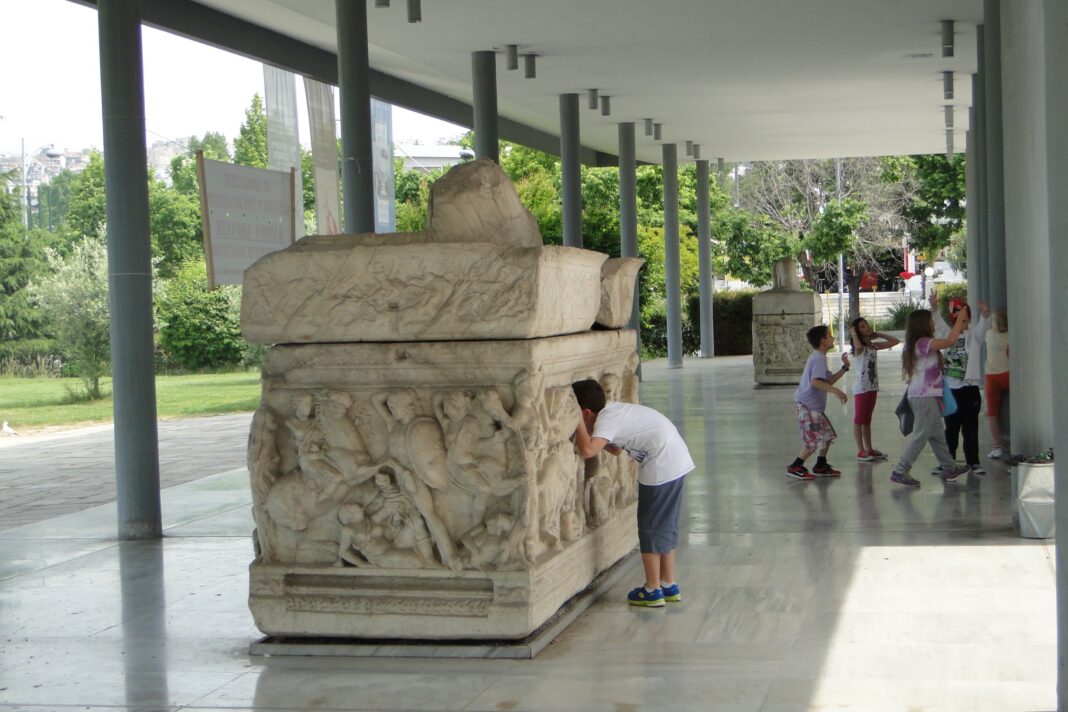“In Thessaloniki, we live our history.” Sofia Bournatzi
Of course, that statement could almost be a cliché if it wasn’t applied to Thessaloniki. It has a greater impact on the city simply than having multiple UNESCO World Heritage designations; it has more to do with resilience. Despite wars, earthquakes, and fires, Thessalonians are doing what they have been for 2,300 years.
Founded in 315 BC by King Cassander of Macedon he is said to have wisely named the city after his wife, Thessalonike, sister to Alexander the Great, yet Cassander had a specific vision. Thessaloniki (aka Saloniki or Salonica) was to be the major gateway port from the heart of Alexander’s Macedonian empire for southeastern Europe connecting to Asian trade routes – the Silk Road.

Out in the Thermaic Gulf from Thessaloniki’s expansive Waterfront Promenade, with the mountains of Olympus as a backdrop, merchant ships are anchored waiting their turn at the modern docks just north of downtown. Behind are the Ladadika, Ano Poli, and the “acropolis” – the imposing Heptapyrgion fortress. These districts are the commercial, cultural and culinary heritage of the city – its postcards.

This reality has made the city coveted and popular over the millenniums by conquerors from Rome to the Ottomans, and their presence is still palpable. It’s under your feet; it’s towering over your head, and soon you’ll whiz by more on the new state-of-the-art underground subway/tube system. The past is an integral component of Thessaloniki’s urban fabric because it’s in your face.
The Palace of Galerius
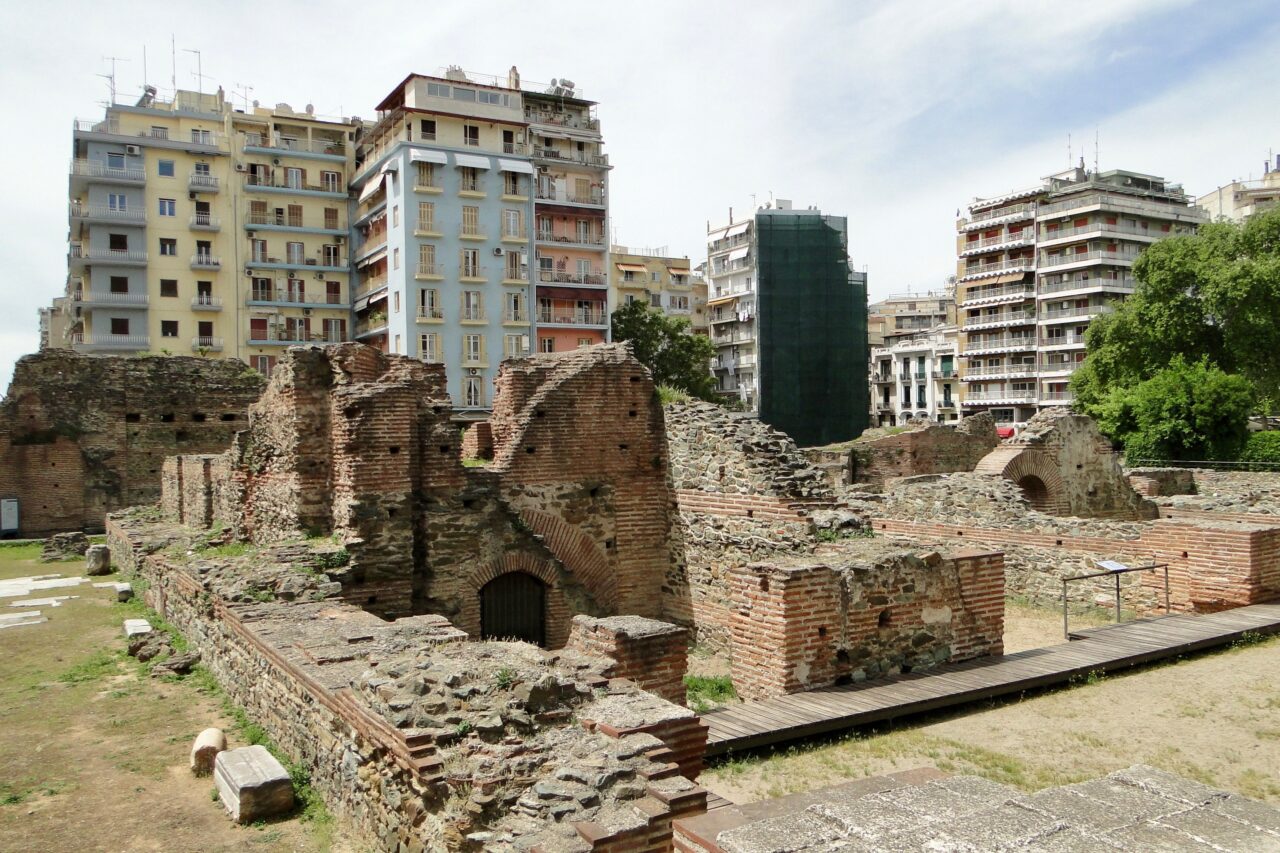
The Romans were enamored with the commercial success enjoyed by Thessaloniki and in the 100s BC absorbed Macedonia into their empire. Three hundred years later the port city was the largest in Rome’s Greek provinces and one of the wealthiest in the empire. By the end of the 3rd century, Thessaloniki was poised to become central to the new Eastern Roman Empire.
The Palace of Galerius was not a large luxurious house. It was an “Imperial City” with administrative, residential, religious, and public entertainment venues. Depending on interpretation, it was such a vast complex it would have to be considered a total rehab of Cassander’s Thessaloniki.
Gaius Galerius Valerius Maximianus (Caesar: 293-311) newly appointed “assistant Emperor” in the Tetrarchy created by Diocletian, preferred Thessaloniki over his region’s official capital. Construction on his palace complex started in the late 290s.
It covered today’s historic core and was composed of numerous interconnected components, most of which today are lying underneath streets, parks, residential and commercial buildings. The complex was enclosed by massive defensive walls from the port waterfront up to the newly fortified acropolis. Besides ruins from sections of the Emperor’s palace, the most visible examples of the complex are the triumphal Arch of Galerius and the stunningly preserved Rotunda.
The Arch of Galerius

The Arch of Galerius stands on the busy intersection of Egnatia & Dimitriou Gounari Streets just as it has since its construction in the 4th century. Thessaloniki’s Egnatia Street is the city’s portion of the 2,000-year-old Roman Via Egnatia, which still connects (as the A2) Macedonia to Istanbul (aka Constantinople, Byzantium). Significant remains of its intricate carved marble panels detail the military prowess of Galerius and Rome.
Rotunda
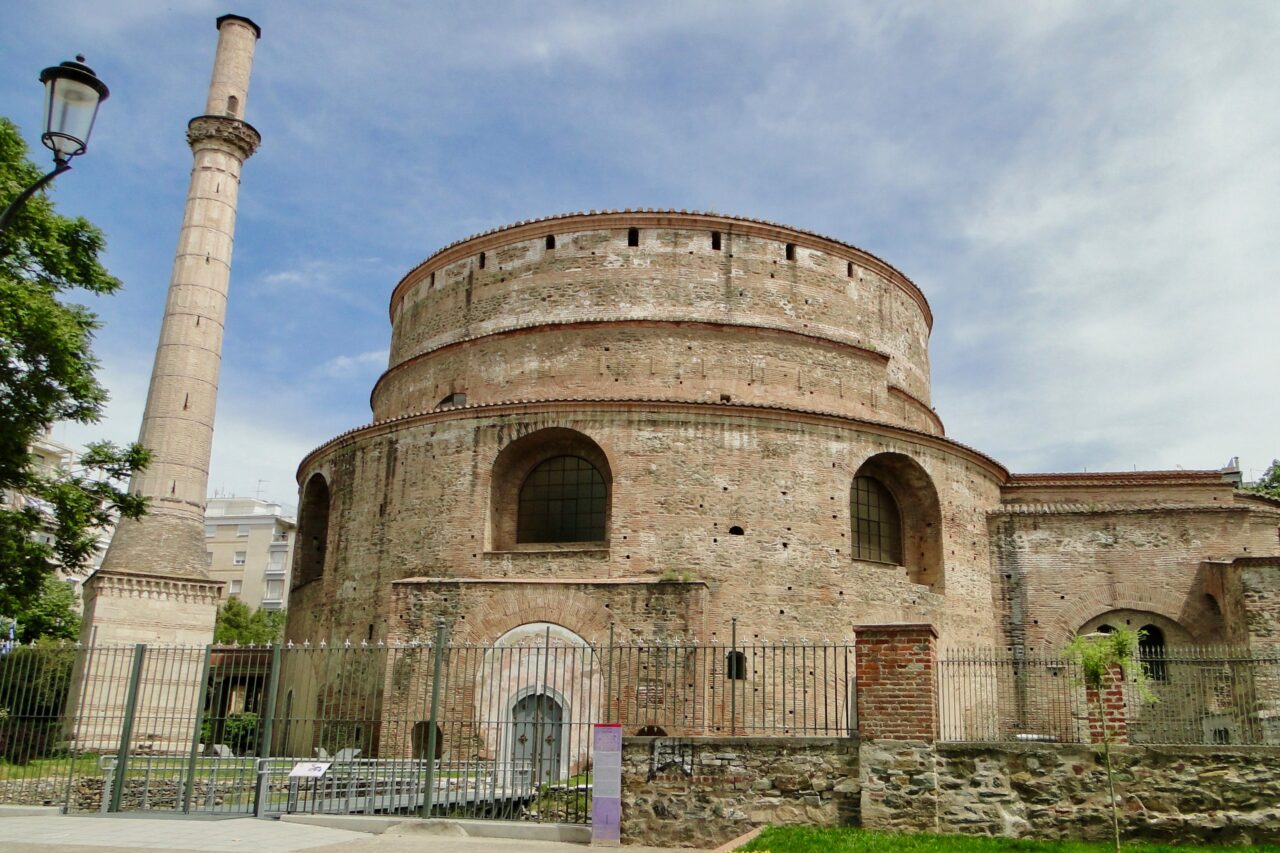
The cylindrical Rotunda was built in 306 AD and has served as a public building ever since. Emperor Galerius intended the Rotunda to be his tomb, but instead, it opened as a temple possibly to Zeus. By the end of the 5th century, Christianity had been established in the Empire and for over the next thousand years, the Rotunda was the Byzantine Church of St. George. After the Ottoman conquest in 1430, it became a mosque (note the 16th-century minaret in the photo) until 1912 when after Greek/Macedonian reunification it was designated a national monument. (Ottoman-era buildings are protected by historic designation throughout Greece). Its golden frescoes are undergoing extensive restoration.
Heptapyrgion

The Heptapyrgion towers above downtown Thessaloniki from where the ancient acropolis was located on the foothills of Mount Chortiatis. The massive fortress guarded the city for nearly two millenniums. Started by the Romans in the late 4th century along with rebuilding the defensive walls to encircle the entire city, it was substantially expanded by the Byzantine Empire in the 12th century and the Ottomans in the 15th.

Oddly both its Greek and Ottoman name (Yedi Kule) mean “fortress of seven towers” even though it has ten and at no time in its history did it just have seven. Despite that bureaucratic anomaly, the impressive relic today serves as a historic district and park with panoramic views of the city. Between the Heptapyrgion and the Ladadika neighborhood, historic, colorful and artistic Ano Poli (Upper Town), which survived the Great Fire of 1917, spills down the hillside.
The Baptistery of St. John

The Baptistery of St. John the Baptist of Thessaloniki (c.400) is a peaceful hidden sunken garden with an art deco apartment building and outdoor cafe overlooking the site. The freshwater spring, sacred to Christianity, still flows but is now visible from inside a modern chapel. St. John’s is considered the oldest baptistery in Christian history. It is close to the 5th century Hagia Sophia and within the Galerian Palace complex.
Bey Hamam
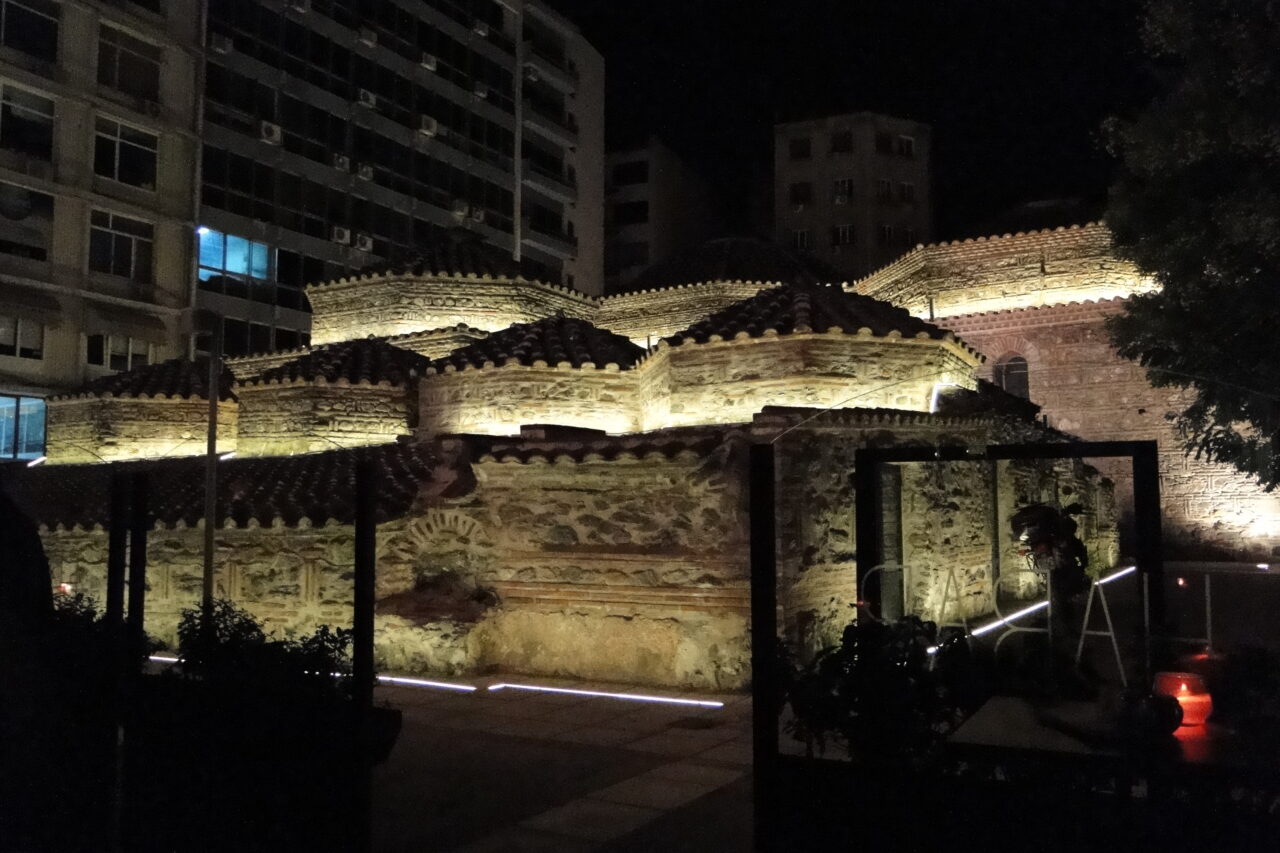
Surrounded by popular cafes in the shopping district of the Ladadika is one of Thessaloniki’s most beautiful medieval buildings – the 15th century Bey Hamam. This Ottoman-era public bathhouse is a testament to the sophistication Thessaloniki has enjoyed during its long history. Only ceasing its original use in the 1960s, its intricate brick, and the tiled facade is an architectural sculpture dramatically lit at night providing a stunning visual backdrop for café patrons.
Ladadika
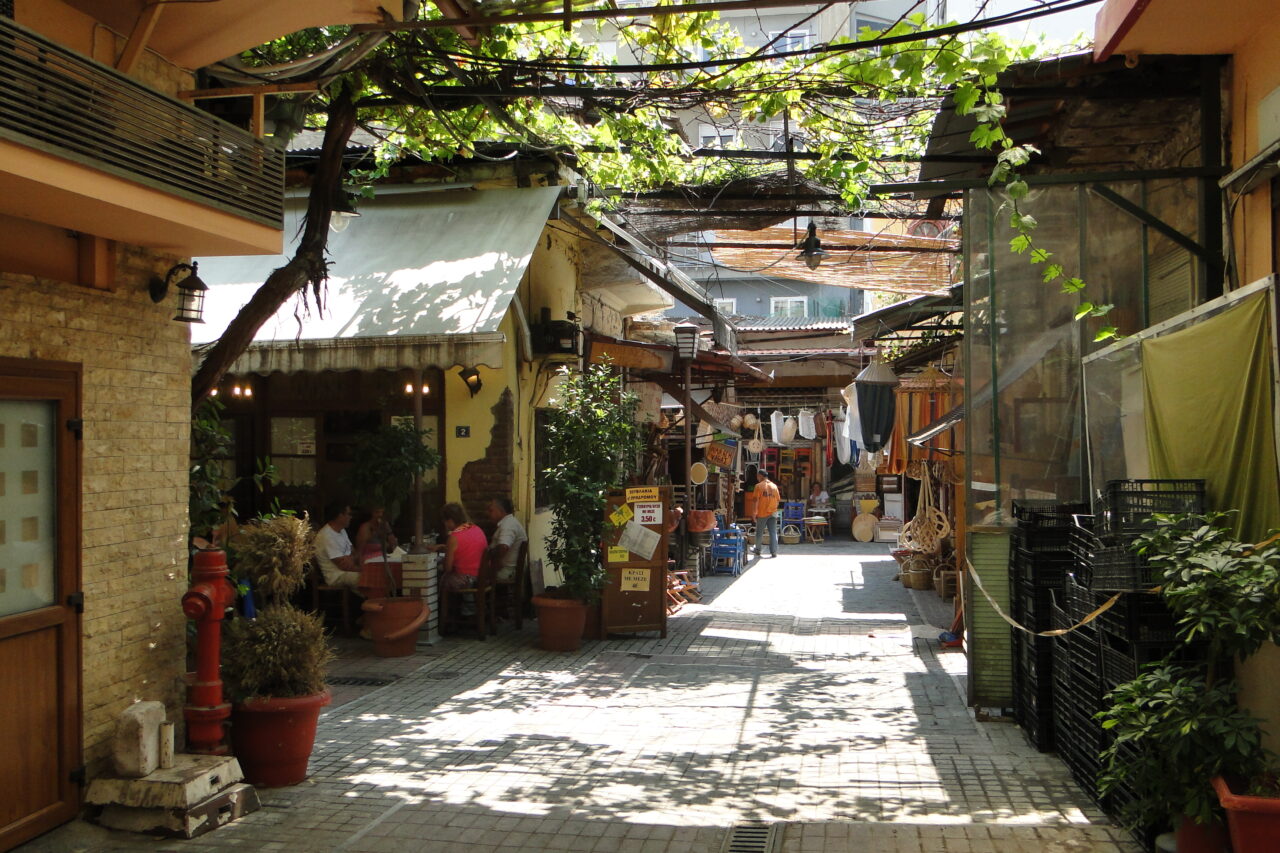
The Ladadika was the Jewish quarter and the market district for the city. In the 16th century, the Ottoman Empire gave asylum to thousands of Jews driven out of Spain. Yet the land has always been the port district of the city and is built atop many layers of history since its founding. Within the historic Ladadika district are grand, still functioning early 20th century markets. The center for Thessaloniki gastronomy for nearly a century has been the Modiano and Kapani markets, both historic post-1917 structures.
The vast Modiano market housed in a grand rectangular glass roofed 1922 structure, is undergoing a total restoration. Portions of the pre-1917 Ladadika neighborhood that survived the Great Fire of 1917 have become fashionable for shopping, cafes, and nightlife.
The White Tower
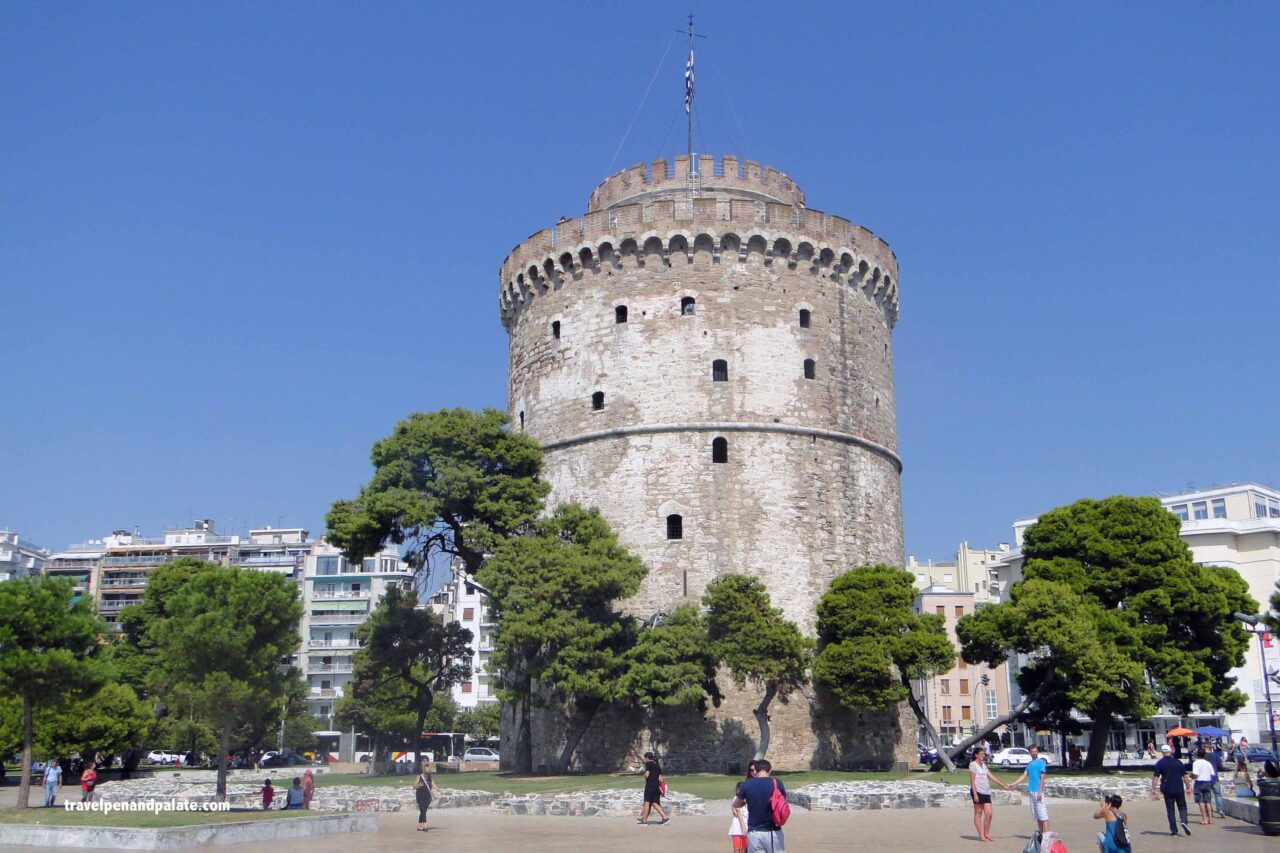
The White Tower’s infamous history as a notorious Ottoman prison fades in the midst of time when viewed today at its photogenic location on Thessaloniki’s historic waterfront. The current tower, constructed in the 15th century, replaced an earlier Byzantine fortification anchoring what originally would have been the southern corner of the Palace of Galerius waterfront walls. The tower is today a fascinating museum of the history of the port district and offers panoramic views of Thessaloniki.
Rebetika Music
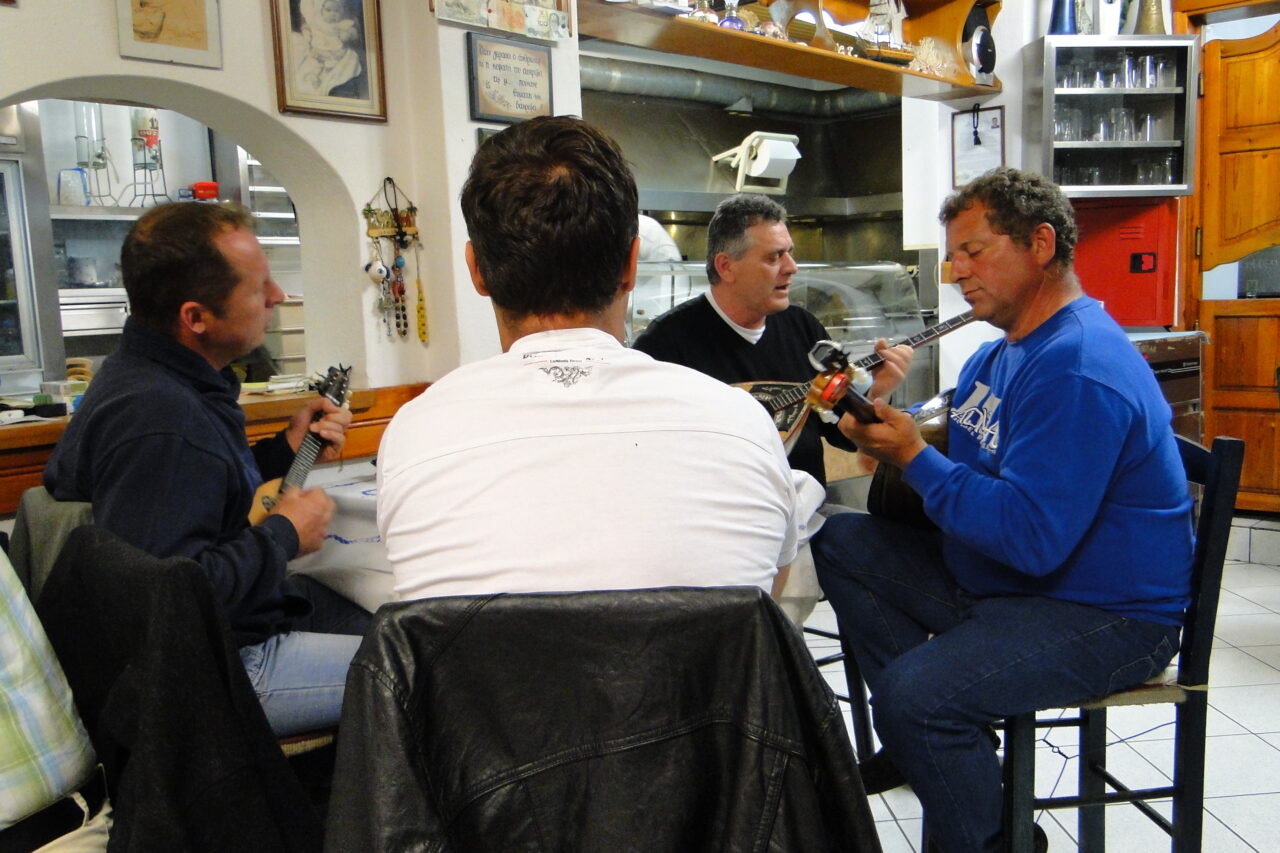
Many famous rebetika songs of love and loss were written by Greek prisoners in the White Tower and the Heptapyrgion during the last half-century of Ottoman rule, which ended in 1912. This mournful yet captivating music of longing, love, and loss still reverberates in many Greek tavernas bonding music, food, and friends. In 2017 UNESCO listed rebetika music as an intangible cultural heritage of Greece.
When you go: Thessaloniki International Airport (SKR) is served through major European hubs and Greek cities. Thessaloniki is connected as well by rail and coach bus within Greece and to the Balkans.
Special thanks to Sofia Bournatzi of Pass Partout DMC and to the Thessaloniki Tourism Organization for facilitating my stay.
Travel with Pen and Palate to Greece and the world every month in the Hellenic News of America
